The Promax chair
“The accelerated world of promos, marketing and branding is symptomatic of the avalanche of change that has affected our industry. This year’s entries in the Promax UK awards come from the widest range of companies so far, including nods for BT Vision, Tiscali TV and Orange TV. This is why this year’s conference is looking for inspiration from beyond our immediate industry to learn from other purveyors of content such as the music business and museums. Some will tell you it’s all about communities, some about authenticity, some about standing for something.
“Attracting audiences to your content is getting tougher. Buying attention with increased spend on billboards or bandwidth is not really stacking up any more. Advertisers are looking for ways to avoid giving their budgets straight to television.
“It’s not that people don’t like television programmes any more, it’s just they don’t have to get them from television channels. Phone companies do TV, newspapers do TV, internet does TV, while TV is trying to do internet, phone and file sharing - every-one is now a wannabe media brand.
“The levelling of the distribution playing field is going to make it all the more fun. Acquisition and commissioning strategies that don’t match brand, and marketing that doesn’t match publicity, leave many channels gasping for a reason to be. In the digital space, brands that don’t have a distinct positioning are not going be able to draw sufficient numbers to last. What is the point of a channel if it doesn’t have a handle on what the audience should expect?”
Martin Delamere is a freelance branding -consultant
The creative services provider
“Increasingly viewers are associating programmes with channels and channels with programmes. You are seeing the wider use of dogs (permanent channel logos) in the top right-hand corner of the screen. Channels are also conveying their personality more - BBC3 uses mischievous cartoon-style blobs which are sick over the screen. The embodiment of personality in a channel was taken one step further by UKTV’s recent rebranding of its G2 channel to Dave - a move that ensured it got talked about.
“Using other platforms to promote your product can be a much stronger way of communicating. Red Bee carried out a successful cross-media campaign to promote the second series of Life on Mars. It involved a viral of a Camberwick Green-style scenario and a vintage poster campaign.
“We’re also applying traditional broadcast promotion skills to help clients on newer platforms, including Orange’s forthcoming IPTV service, which has animated characters who guide viewers through the content.
“In digital TV the creation of ‘barker’ channels which appear in the right-hand corner of the screen while the viewer looks through the menu will also see us employ more traditional skills.”
Clare Phillips is head of planning at Red Bee
The cultural commentator
Steven Berlin Johnson is the New York-based author of Everything Bad is Good for You
“We have this idea that popular culture is dumbing-down but we live in a golden age of great TV, which has been heavily influenced by digital media such as the video game culture.
“Take the drama series Lost, for example. Its structure resembles that of a video game: there is an environment the user/ viewer has to explore and a back story that they have to uncover.
“It’s an engaging format and in terms of promoting your content you get much more commitment from viewers using these structural devices than you would from flashy graphics or a catchy tune. Shows like Lost, The Sopranos and Desperate Housewives also contain multiple storylines and subtext, allowing them to bear up well to repeat views and chat forums.
“These shows are also examples of content that can’t be produced with your friends. Only large broadcasters are capable of producing shows on this scale and this content is central to their brand.
“This being the case, I don’t understand why networks do not promote more of their content by distributing it free online. When you have a new show and you’re trying to build an audience for an entire first season it would make sense to do this.
“It’s not a move that would cost -broadcasters a great deal - other people pay for the bandwidth and any revenue broadcasters may lose out on they can make up for later. Shows that last six -seasons become valuable on so many levels - with spin-off shows, DVDs, syndication and so on. The worst thing a broadcaster can do is just air 10 linear programmes and then do nothing with it when the show goes off air.
“On the advertising side we are moving from passive to engaged entertainment and most media decisions in the future will come through social networks.
“Facebook, for example, starts with friends of friends rather than mass advertising. To some extent word of mouth has always existed. The difference now is that word of mouth is encoded in software. It’s a good opportunity for brands to influence decision-making, although the down side to these networks is that you have to be invited in.”
The ad planner
“A brand is a mental construct that exists inside the head of the individual - it is not owned by an organisation. Broadcasters can’t own brands, their audience does. What they can do is improve the perceptions of those brands and increase their fame.
“A brand certainly does not mean having a logo. While there are lots of channels out there with fancy logos, there are not many real brands in broadcasting. Many digital channels exist because they are bundled together in packages - if you didn’t have those bundles and consumers were given the option of picking and choosing the channels they wanted, it would be a disaster. That’s when you would realise whether you had a brand or not and by then it would be too late.
“TV channels are a bit like train operators in this respect. They all think that they have a brand and probably have a branding agency, a logo and a set of brand guidelines - but are they really brands? Do they really mean anything to people? Too many TV channels are the broadcasting equivalents of Silverlink Metro.
“When the brand crunch comes in broadcasting, and pressure on established revenue models will ensure it does, you’d better ensure you actually have a brand people care about and not a space on the EPG and a collection of programmes.
“Planning seems to be a new discipline for most broadcasters, who tend to be cynical about what it can offer. What we are good at is helping understand the relationship between products and brands, and how to position both in people’s minds to make them more effective.
“We are also helpful at bridging the creative and commercial worlds, changing objectives into activity and inspiring creative people to solve the right problems in the right way - by understanding what the channel or programme should mean to people and what role it should play in their lives.
“That’s one of the things ex-planner Cameron Saunders has been doing for C4’s digital channels. Looking at the success of his Skins launch campaign it seems to be working. The show’s cross-media strategy of creating ‘a party in every media’ turned the programme into a cult before the show had even aired.”
Richard Huntington is a former planning director of United London (previously HHCL) where clients included the AA, Tango and Sky. He now works as a freelance brand -consultant
The broadcaster
“This year Promax is looking at creative opportunities of the ‘near future’ - which is a suitably vague timescale for an area where no one really knows exactly where we will be next year, let alone in five years’ time. For those of us in broadcasting, our job is to try to map the path into the future - even if we end up lost on a B road and stuck in traffic.
“At ITV we’ve made good progress and I want to talk about the huge opportunities for content players in a world that is expanding into almost every aspect of consumer life and across national boundaries. But while we’ve got 360-degree reach we have yet to become a truly 360-degree player. This is my key challenge. I need to grow our share of the market on screen and online, at home and abroad.
“Exploiting our content online is a crucial part of our strategy. This is the year broadcasters have finally landed on the web and broadly speaking it is great news for content creators. We can create new content on TV which we cross-promote online and link to our back catalogue to reintroduce viewers to great shows they missed the first time round. It’s a virtuous circle that works for our viewers and delivers what our advertisers want. Our brand opens doors for us on new platforms, but it is the quality and originality of our content that will keep people there.
“It is only by generating the best ideas, ideas we can exploit across -platforms and territories, that we will succeed - map or no map.”
Dawn Airey is managing director of global -content at ITV
The public service provider
“The Tate’s mission is drawn from the 1992 Museums and Galleries Act, which is to increase public knowledge, understanding and appreciation of art. This means, in essence, that everybody working for Tate is involved in promoting our collections. Everything we do that carries our logo is marketing.
“Our primary motive as a content owner is not to make money but to explore our subject and service the general public. To do this we work in partnership with others. This tends to always mean artists, often other organisations and now, increasingly, the -general public.
“This creates a stimulating -atmosphere to work in. Partners challenge us intellectually as well as bringing vitality through having fresh perspectives. You need the courage and the ability to take risks.
“Every Turbine Hall commission we make, every artist commissioned at Tate, every time we have an exhibition of an artist that no one has heard of, is a huge risk.
“A year and a half ago we created Tate Media, a media company that sits within Tate. We make TV programmes, run the country’s most visited arts website and are developing an online TV channel. Tate Media also publishes a magazine, has a design studio and employs advertising specialists. It is run as a media entity but its purpose is to maximise Tate’s intellectual property: our collection, our programme, our curators’ knowledge, our brand and our relationships.
“While broadcasters struggle to find an audience for art, the Tate already has that. Recently we made six low-budget short films of artists talking about art - some of which have gone straight to number one in the iTunes chart.
“For us, a brand is just a platform where the activity takes place. It’s not the activity itself. A brand is only a reputation - they are hard to earn and very easy to lose.
“TV is facing some profound issues at the moment. In a world where broadcasting is quickly losing its pre-eminence as the main consumer interface for audiovisual content and where communities of interest are being built elsewhere, what exactly is the future role of the broadcaster?”
Will Gompertz is director of Tate Media
The internet television guru
“Putting content on an internet TV network is just another chance for broadcasters to extend their reach in terms of platforms and advertising. Joost is an extension of their own airtime and we give them the ability to control it. In the US, where our site is more developed, broadcasters such as CBS and Warner Brothers are putting hours of their content onto our platform, which is free for the public to view (we take a cut in the online ad revenue).
“Content owners see us as a way of extending their brand online. CBS tried to do its own website but found that its brand was not as attractive on the internet. Through Joost, it was able to put its content online for nothing, its branding stayed intact and the broadcaster also has the opportunity to make money through extending its advertising reach.
“When people can click and watch 1,000 of hours of programming unrestricted by a schedule, it makes traditional forms of promotion redundant. In the online world, content promotion is an automated process and in the future it will be set around having content come at the viewer, as opposed to the viewer seeking the content.
Now that you can search for video, the next step will be second-guessing what people will want to watch and creating channels out of their preferences. For example, ITV.com lets users name their favourite shows with the search engine recording what the user looks for. Users of online TV sites will soon be able to receive automated emails or text messages notifying them of programmes - or signals that are sent directly to PVRs to record content.
“There will still be opportunities for the craft side of promotion. Everything is cyclical. In the US they used to have barker channels, which showed excerpts of TV shows from other channels, and I can see this being revisited online.
“Joost does not commission its own content. We may in the future - but that does not mean we will be rivals. Around 99% of revenue is generated through the broadcast stream and even if we reach the level where 20% of content comes from the net, broadcasters will still have the real power to publicise it.”
Tony Orsten, former managing director of the Paramount Comedy Channel, is now working in content strategy and acquisition at Joost, with a remit for comedy


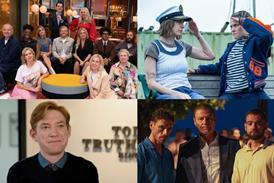




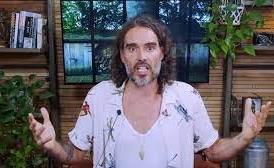

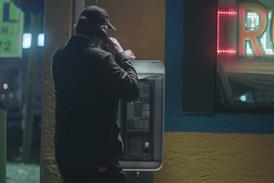

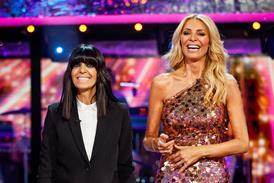





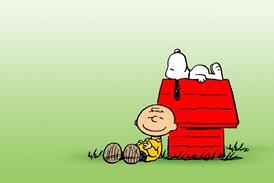
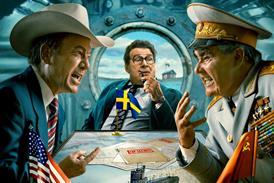
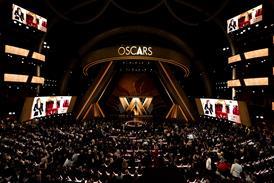
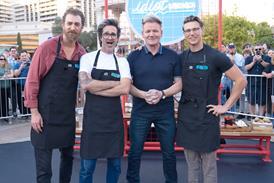

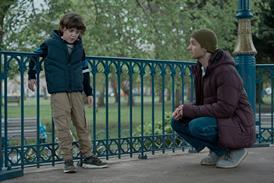



No comments yet